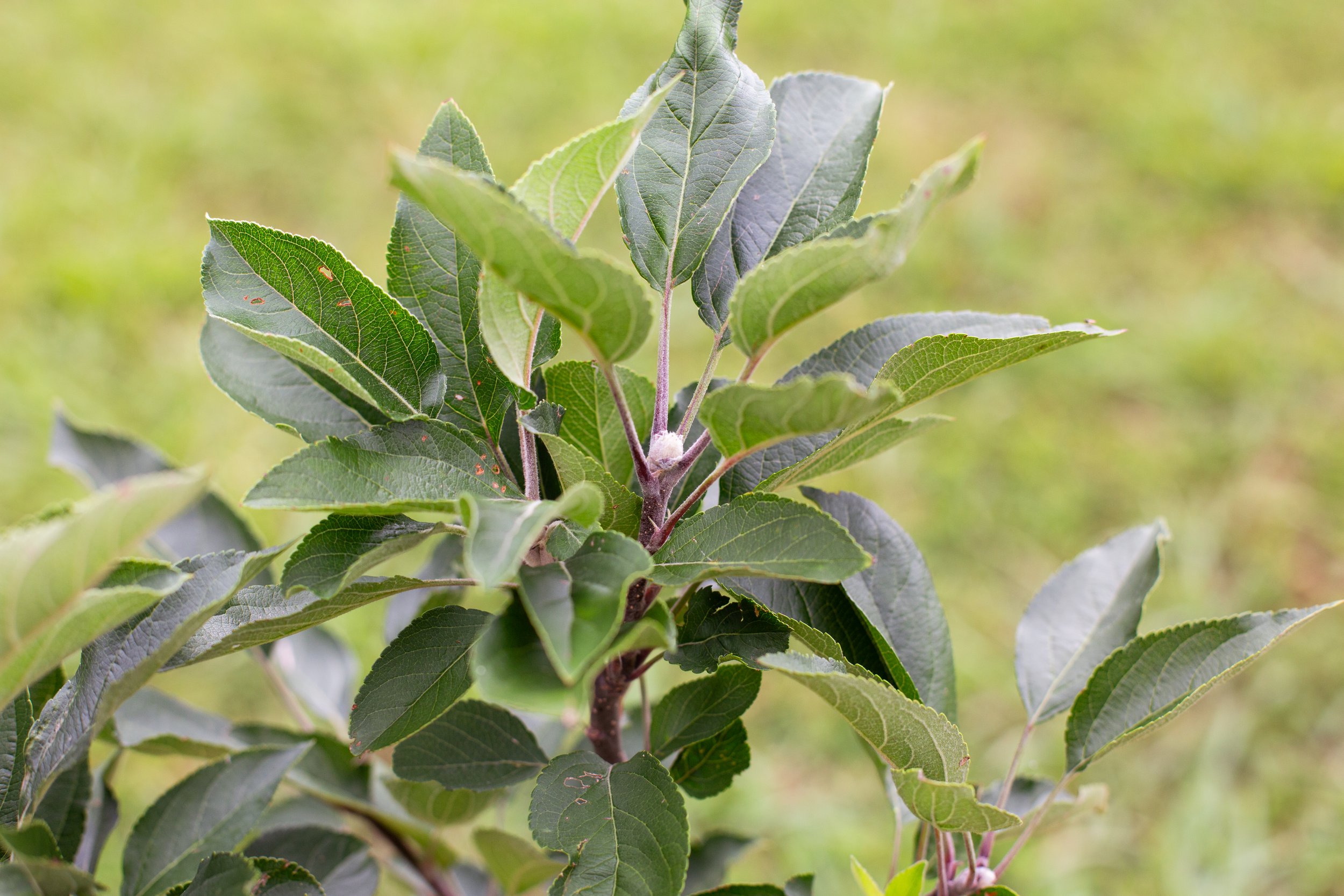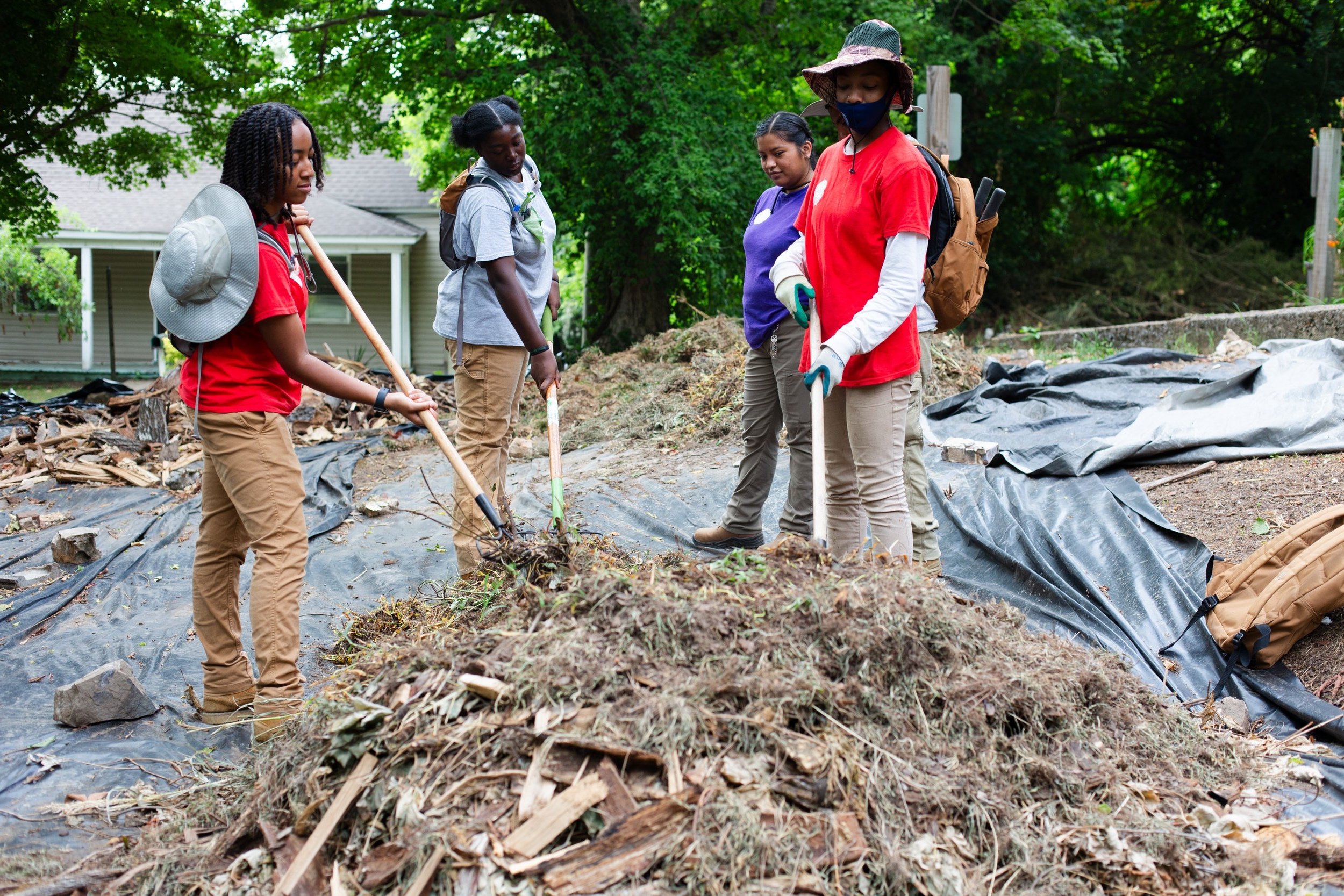
Learn Together
a space for collaborative knowledge and resource sharing on establishing and maintaining a food forest in Chattanooga
What is a Food Forest?
The Beacon Food Forest, an important pioneer in the community food forest movement, defines it this way: “a land use system in which trees, shrubs and agricultural crops are interspersed. This creates a multi-story ecosystem that can mimic the self-sustaining functions of a natural forest while incorporating food plants for human consumption. The result is a semi-natural landscape that requires far less maintenance than row crops, provides habitat for pollinators, bugs and birds, and can sustain perennial as well as annual food plants.”
community
-
Begin with at least 3 different households commited to the idea, implementation, and maintenance. A food forest is a great space to grow and connect as a community.
They require a community to build it and hold the potential to build a community. Community green spaces build deep relationships as neighbors and new friends work together to make a neglected space a source of abundance. The work of watering, weeding, planting, and harvesting requires us to coordinate and co-operate. It's work that can’t be done alone and work that will benefit more than just the people working.
-
Find a location with public access and where you have permission to plant. Find someone in your neighborhood who owns a vacant lot and is willing to commit it to the public good. Work with the city to use a vacant lot or plant in a park or community center. Ask a local church or non-profit if you can plant on their land. Wherever it is, make sure it is publicly accessible and near your community of leaders to plant, water, and harvest. Obtain a written agreement making it publicly accessible as long as a food forest is maintained on site. We recommend acquiring an MOU for the land with a minimum of 5 years.
-
While designing out your community food forest, keep coming back to the community piece.
This does not work without the community piece. Get together regularly. Laughter. Potlucks. Work days. New recipes. Whatever your goals are, they need the fertilizer of fellowship.
How will you share about events with your wider community?
-
How will food be distributed? Is emphasizing native plants for insect habitat a priority? Is improved soil and water retention a priority? Is the goal to build up local community, increase food access, or increase agricultural literacy? It may be all of these, but depending on what your goals are will change how you want to build the food forest.
Gather your community and consider the assests (skills) that exist amongst your group. How will that function into your goals?
soil
-
Get the soil tested for nutrients and heavy metals. For nutrients, it's nice to know what you are starting with and how much compost and mulch you will need to add to heal the soil. For heavy metals, like lead, it is important to know how to take precautions to avoid contamination, especially with children. If you have levels over 400 parts per million, you will need to go through a remediation process before you begin the food forest. No amount of lead is good in the body. Even native soils have around 70 parts per million, so kids should wear gloves while gardening, and no one should eat the dirt.
-
Prepare the soil. Now that you have a design and know what you want to plant, you can prepare the ground for your new plants to succeed. First, remove the weeds. Depending on the size of the site, you can dig them out or smother them. Many people use cardboard with a thick layer of mulch on top. If the soil is compacted (which most urban soils are), it can be helpful to aerate the soil. This can be done using a broad fork or a potato fork if a broad fork is not available. After removing the weeds, add compost to restore organic matter and build soil fertility. If the soil is degraded, this method will build up your soil structure and increase its ability to hold and drain water.
Add mulch on top of the compost and to cover the soil. This will help keep down weeds and hold moisture in the soil. A thick layer of mulch means you don't have to weed or water as much. Some gardeners take the "lasagna" approach, stacking layers of cardboard, compost, and mulch to create a rich space for planting. For a larger area, focus your preparation on where you want to plant and what you can manage for the season. If your site has a slope, you may want to build terraces or berms to slow down and capture water. (Please research these earthworks methods to confirm it is appropriate for your site. Contact us if a site consultation would help for more complex sloped sites).
-
Soil life! An essential principle of soil health is to keep it covered. If undesired plants are being removed from the ecosystem, what plants can you replace with that fill similar roles? Healthy soil is full of microbes that allow your plants to obtain nutrients from the soil. Microbes like slightly cool soil with plenty of oxygen. Keeping the soil covered using Green Manure Cover Crops (GMCCs), plants that cover the ground and add micronutrients, help your microbes to thrive!
Forest Design
-
How do outside factors influence your site? The sun, the wind, water flow, sources of pollution, humans, animals, insects?
Make a sketch of your property to visualize where the sun shines. Knowing what areas get 6 hrs of sun per day is important to know where to plant fruit trees that need full sun for a good harvest. Areas with 3-6 hours of sun (part-sun) or 0-3 hours of sun (full shade) will require different types of plants.
-
Slow, Spread, Sink, Protect. Your food forest has the potential to benefit the city's rivers by reducing stormwater runoff. You can design your plantings and improve your soil to increase groundwater infiltration. Knowing where the water flows helps you plan where to plant. After it rains, healthy soil covered in vegetation will capture the water. Leaves dampen the impact of falling water, and the soil acts as a sponge. The more organic matter your soil has, the more it acts as a reservoir to reduce flooding after storms and increase water flow to streams during dry spells. With good design, you spend less time watering.
-
Sketch the plants already present on the site. You may already have fruiting trees or shrubs present on your site, like mulberries, black cherries, or raspberries. Be sure to think about how people, animals, and plants are already using the site and how your plans might affect the lives of those already present. Whether or not they can speak at your meetings, they are stakeholders in your plans for the land. Spend time talking with neighbors who already use the space. Watch the birds, animals, plants, and insects to see how they interact with the space. Some people choose not to change a site until they have watched and listened to the ecosystem for a year.
-
Sketch a design of what you want to see on the site. Before picking species, start with general function and form. Food forests mimic the ecology of a forest to produce food, so include canopy trees, understory trees, vines, shrubs, groundcover, and root crops. Begin with the canopy and work down towards the ground level.
Make a plant list to fill the categories you sketched on the design. Now, you should have ideas on how many canopy and understory trees you will need, as well as the areas you want to fill with shrubs and ground cover. Mix the functions of the plants by including food production, flowering plants to feed pollinators, aromatic herbs to confuse pests, nitrogen fixers to improve fertility, and nutrient miners to cut for mulch. Consider the sun, water, and soil requirements when placing them on your sketch. Make a plan to guide your work, but don't be afraid to be flexible. You can decide as a group if you want a more potluck approach or to stick to a more rigid plan. Be sure to decide together.
-
Work with the seasons to plant and put your plan into action. In the Chattanooga area, the best times to plant are in the spring and in the fall when plants get a bit more rain. The summer is a time to maintain the space and harvest. Research the plants you chose to see which are better to plant from seed or to transplant. In the first few years of the food forest, the trees will be small, leaving a lot of sun. You could grow annual vegetable crops in between the trees while they grow or work on establishing the ground cover. The garden will change over time as it grows. Nothing can replace paying attention to your particular garden and continuing to learn from and respond to what you see. The food forest, the plants, and the soil are your primary first teachers.
-
Find a rhythm that works for your community to prune the trees, add fertility, weed, and harvest. Think in cycles of rest and work, planting and harvest, and growth and decomposition. Take the weeds and compost them on-site on site to cycle fertility in your soil. You now have a community food forest designed to produce the goals you set. With some care and attention, your neighborhood will enjoy the fruits for years to come.
Book List
COMING SOON!
Schools & Youth
COMING SOON!
Video List
Networks
Community Food Forest Projects in the United States
Beacon Food Forest (Seattle)
Urban Food Forest at Brown’s Mill (Atlanta)
Chattanooga Local Network & Resources











